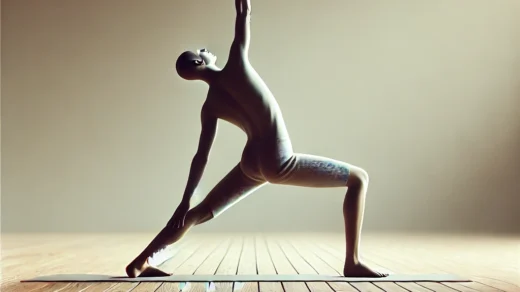Shodhanakriyas: Neti, Kapalbhati, and Agnisara
Introduction to Shodhankriyas:
Table of Contents
Shodhanakriya is a practice in Hatha Yoga aimed at internal purification. These cleansing techniques help remove toxins from the body, promoting a sense of relaxation and lightness.
Let’s explore some key Shodhanakriyas:
- Neti
- Kapalbhati
- Agnisara
Neti: Nasal Cleansing Technique
Neti is a Hathayogic kriya focused on cleaning the nasal passages and throat. It is particularly effective for maintaining respiratory health and is practiced in two forms: Jala Neti and Sutra Neti.
Jala Neti: Cleansing with Water
In Jala Neti, lukewarm salted water is used to cleanse the nasal passages. The steps are as follows:
- Sit in Kagasana, keeping 1.5 to 2 inches of distance between the feet.
- Lean forward from your lower back.
- Tilt your head to the side opposite the nostril that is more active in breathing.
- Insert the nozzle of the neti pot into the active nostril.
- Open your mouth slightly and breathe through it.
- Allow the water to flow through one nostril and out the other.
- After using half the water, clear your nose and repeat on the other side.
- End by practicing Mukha Dhauti, which involves forceful exhalation from the nose and passive inhalation from the mouth.
Dos and Don’ts for Jala Neti:
- Breathe through your mouth during the practice.
- Perform the kriya before sunrise using lukewarm salted water.
- Avoid tilting the head excessively.
- Do not blow your nose too hard afterward, as it may push water into the ears.
Benefits of Jala Neti:
- Relieves chronic headaches, insomnia, and drowsiness.
- Improves eyesight and treats nasal issues.
- Helps reduce stress and anxiety.
Sutra Neti: Cleansing with a Thread
Sutra Neti involves using a soft thread to clean the nasal passages. Here’s how to perform it:
- Sit in Kagasana.
- Slightly tilt your head back and insert the thread into the active nostril.
- Gently push it through the nostril until it reaches the throat.
- Use your fingers to pull the thread out through the mouth.
- Slowly move the thread back and forth 4–5 times.
- Remove the thread and repeat on the other nostril.
Dos and Don’ts for Sutra Neti:
- Insert the thread gently and breathe continuously.
- Ensure the thread is clean.
- Practice only under guidance and after mastering Jala Neti.
- Avoid applying force or rubbing the thread too fast.
Benefits of Sutra Neti:
- Stimulates nerves and improves the function of eyes and tear ducts.
- Massages sinus glands and strengthens membranes.
- Enhances resistance to viruses and treats ENT problems.
Kapalbhati: The Skull-Shining Technique
Kapalbhati is a breathing technique that purifies the head and enhances overall vitality. It involves rhythmic, forceful exhalations.
Steps for Practice:
- Sit in a meditative posture with eyes closed and the body relaxed.
- Inhale deeply through both nostrils and exhale forcefully by contracting abdominal muscles.
- Perform 30–40 strokes in one round, starting with 10 strokes if you’re a beginner.
- After completing the strokes, exhale deeply and relax.
Dos and Don’ts for Kapalbhati:
- Maintain rhythmic breathing with active exhalation and passive inhalation.
- Avoid straining facial muscles.
- Do not practice if you have high blood pressure, heart issues, or gastric ulcers.
Benefits of Kapalbhati:
- Purifies frontal sinuses and stimulates the brain.
- Improves digestion by massaging abdominal organs.
- Increases lung capacity.
- Treats cold, sinusitis, and bronchial infections.
Agnisara: The Essence of Fire
Agnisara, also known as Vahnisara, involves rapid movements of the abdominal muscles to stimulate digestive fire and improve abdominal health.
Steps for Practice:
- Stand with feet shoulder-width apart.
- Bend your knees and body at a 60° angle, placing hands on thighs.
- Exhale completely, then contract and expand your abdominal muscles rapidly while holding your breath out.
- Breathe in slowly and repeat 2–3 times.
Dos and Don’ts for Agnisara:
- Perform on an empty stomach.
- Keep the movements rhythmic.
- Avoid holding your breath beyond your capacity.
- Do not practice if you have high blood pressure.
Benefits of Agnisara:
- Massages abdominal organs and aids digestion.
- Reduces fat and strengthens abdominal muscles.
- Harmonizes the functions of the liver, kidneys, spleen, pancreas, and bowel.
Conclusion
Shodhanakriyas are powerful practices in Hatha Yoga that cleanse the body, enhance respiratory health, and improve overall well-being. Regular practice of these techniques under proper guidance can lead to a healthier and more balanced life, free from many physical and mental ailments.
Subscribe to us on YouTube and try our quizzes on this website to keep your exam preparation on track.


